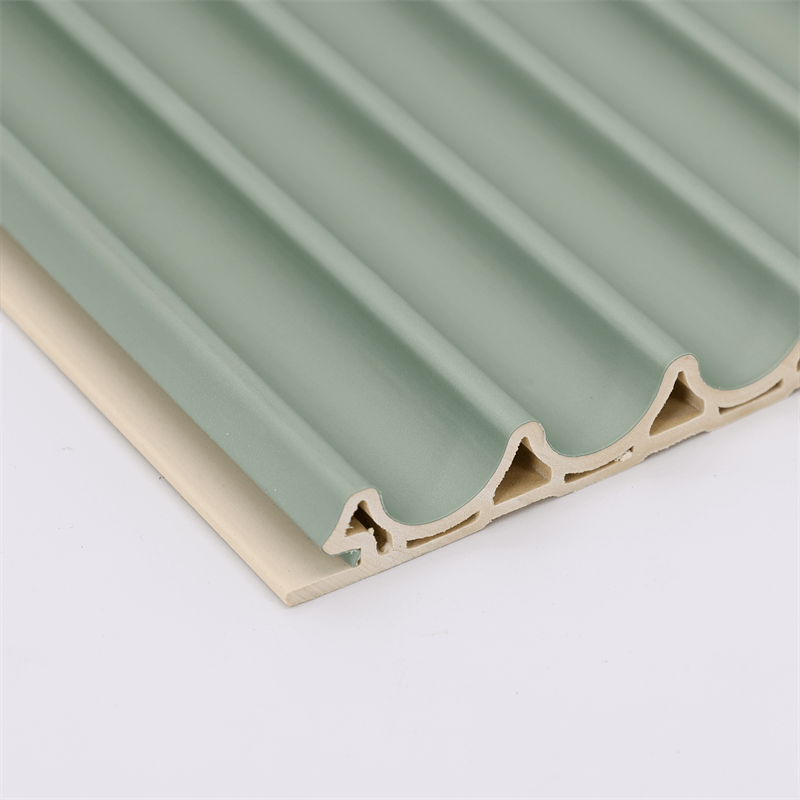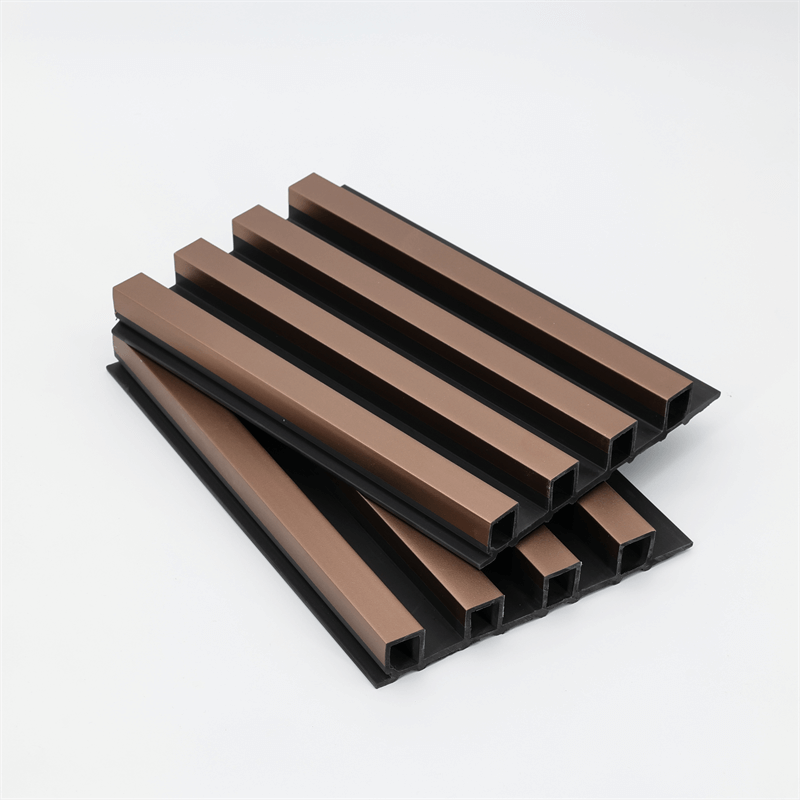In the world of interior design, creating elegance and sophistication within a space is a desired goal.
One way to achieve this is by incorporating WPC (Wood-Plastic Composite) wall panels.
These panels offer a unique blend of natural beauty, durability, and versatility, making them an ideal choice for enhancing indoor spaces.
In this essay, we will explore how WPC wall panels can create indoor elegance through their aesthetic appeal, versatility in design, integration with various architectural styles, and their ability to elevate the overall ambiance of a space.
I. Aesthetic Appeal: Natural Beauty with Modern Flair
WPC wall panels are renowned for their aesthetic appeal, seamlessly blending the natural beauty of wood with a touch of modern flair.
These panels are available in a variety of colors, patterns, and textures, allowing designers to create visually striking interiors that exude elegance and sophistication.
One of the key features of WPC wall panels is their ability to replicate the appearance of natural wood.
Whether it’s the rich grain patterns, warm hues, or the tactile quality of wood, WPC panels offer an authentic and organic look that adds a touch of luxury to any space.
From rustic charm to sleek contemporary designs, the natural beauty of wood-inspired WPC panels can complement a range of interior styles.
Moreover, WPC panels are not limited to replicating wood alone.
They can also emulate other materials such as stone, marble, or even metallic finishes, providing designers with endless possibilities to create unique and captivating visual effects.
This versatility allows for the creation of stunning feature walls or accentuating specific areas, adding depth and elegance to the overall design scheme.
II. Versatility in Design: Unleashing Creativity
WPC wall panels offer designers a vast range of design possibilities, allowing them to unleash their creativity and craft unique indoor spaces.
These panels can be easily customized to fit different wall sizes, shapes, and configurations, making them a flexible choice for both residential and commercial projects.
The versatility of WPC wall panels extends beyond their application on flat walls.
They can be creatively used to highlight architectural features, such as alcoves, columns, or niches, adding a touch of elegance and architectural interest.
Additionally, WPC panels can be installed horizontally, vertically, or even diagonally, allowing designers to experiment with different layouts and create eye-catching patterns or focal points within a space.
Furthermore, WPC panels can be combined with other materials to create stunning design contrasts and combinations.
For example, integrating WPC panels with glass, metal, or fabric elements can add a sense of modern sophistication or create intriguing visual juxtapositions.
This versatility empowers designers to push the boundaries of design, resulting in truly unique and elegant interiors.
III. Integration with Various Architectural Styles: Timeless Elegance
WPC wall panels seamlessly integrate with various architectural styles, making them a versatile choice for both traditional and contemporary spaces.
Whether it’s a classic Victorian home, a sleek modern apartment, or a transitional commercial space, WPC panels can enhance the architectural character and elevate the overall ambiance.
In traditional settings, WPC wall panels with intricate patterns and textures can be used to evoke a sense of timeless elegance.
These panels can be applied to accentuate architectural details, such as wainscoting or paneling, creating a sophisticated and refined look.
In contemporary designs, smooth and minimalist WPC panels in neutral tones can contribute to a sleek and clean aesthetic.
These panels provide a backdrop for other design elements to shine, showcasing the simplicity and elegance of modern interior design.
Moreover, WPC panels can seamlessly blend with transitional styles that combine traditional and modern elements.
The natural warmth and versatility of WPC panels make them an ideal choice for creating a balanced and harmonious transitional interior, bridging the gap between old-world charm and contemporary sophistication.
IV. Elevating the Ambiance: Adding Sophistication and Comfort
WPC wall panels not only enhance the visual appeal of a space but also contribute to the overall ambiance by adding sophistication and comfort.
These panels have acoustic properties that help reduce noise and echo, creating a more serene and pleasant environment.
In busy commercial spaces or residential areas where peace and tranquility are desired, the use of WPC panels can significantly improve the acoustic experience.
Additionally, WPC wall panels offer thermal insulation properties, helping to maintain comfortable temperatures indoors.
By providing an additional layer of insulation, these panels contribute to energy efficiency, reducing heating and cooling costs while ensuring a cozy and inviting atmosphere.
The durability of WPC panels is another aspect that elevates the ambiance of a space.
These panels are resistant to moisture, impact, and wear, ensuring their long-lasting beauty even in high-traffic areas.
Their low-maintenance nature also allows occupants to enjoy the elegance and comfort of the space without the hassle of frequent upkeep.
WPC wall panels have become a popular choice for designers and homeowners seeking to create indoor elegance.
With their aesthetic appeal, versatility in design, integration with various architectural styles, and ability to elevate the ambiance of a space, these panels offer endless possibilities for creating sophisticated and visually captivating interiors.
By embracing the natural beauty of wood, exploring creative design options, seamlessly integrating with architectural styles, and enhancing the overall comfort and ambiance of a space, WPC wall panels provide a versatile and elegant solution for transforming indoor environments.
Whether used to create feature walls, add texture and depth, or complement existing architectural elements, WPC panels are a valuable asset in the pursuit of creating indoor elegance.
In addition to their aesthetic appeal, versatility, and ability to elevate the ambiance, WPC wall panels also offer practical advantages that further enhance their value in interior design.

One of the key practical benefits of WPC panels is their durability and longevity.
These panels are engineered to withstand the test of time, maintaining their structural integrity and visual appeal even in high-traffic areas.
They are resistant to scratches, stains, and fading, making them ideal for spaces that require durability and easy maintenance, such as residential homes, commercial establishments, and public spaces.
Furthermore, WPC wall panels are moisture-resistant, which is particularly advantageous in areas prone to high humidity or moisture, such as bathrooms, kitchens, and basements.
Unlike traditional wall materials, WPC panels do not absorb moisture, preventing the growth of mold and mildew. This not only ensures a healthier indoor environment but also prolongs the lifespan of the panels.
Another practical advantage of WPC panels is their ease of installation. These panels are designed for simple and efficient installation, saving time and labor costs.
They can be easily mounted onto a variety of surfaces, including drywall, concrete, or even existing tiles, providing a hassle-free solution for renovation projects.
The interlocking or tongue-and-groove systems of WPC panels ensure a secure and seamless fit, resulting in a professional and polished finish.
Maintenance is also a breeze with WPC wall panels.
Unlike traditional wall materials that require regular repainting, sealing, or wallpaper replacement, WPC panels only require occasional cleaning with mild soap and water to keep them looking pristine.
Their low-maintenance nature not only saves time and effort but also reduces the need for ongoing expenses associated with maintenance.
From an environmental perspective, WPC wall panels are a sustainable choice.
They are made from a combination of recycled wood fibers and plastic, reducing the demand for virgin materials and diverting waste from landfills.
By using WPC panels, designers and homeowners contribute to the conservation of natural resources and the reduction of environmental impact.
Furthermore, the energy efficiency of WPC panels is worth mentioning.
The insulation properties of these panels help improve the thermal efficiency of a space, reducing heat loss in winter and heat gain in summer.
This can lead to energy savings and a reduced environmental footprint.
In conclusion, WPC wall panels offer a perfect balance of aesthetic appeal and practicality in interior design.
Their durability, moisture resistance, ease of installation, low maintenance requirements, sustainability, and energy efficiency make them a valuable asset for creating elegant and functional indoor spaces.
By incorporating WPC wall panels into design projects, professionals and homeowners can enjoy the benefits of a visually stunning and long-lasting solution that enhances the overall aesthetics, comfort, and sustainability of any interior space.
Whether used in residential homes, commercial establishments, or public spaces, WPC panels provide a reliable and stylish option for transforming interiors and creating an atmosphere of elegance and sophistication.


